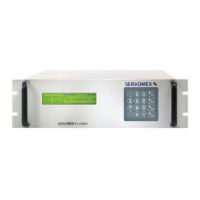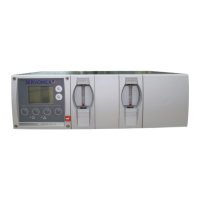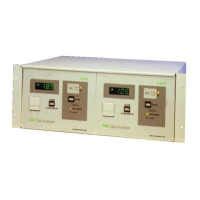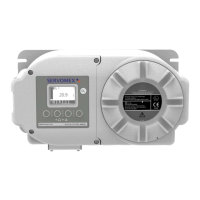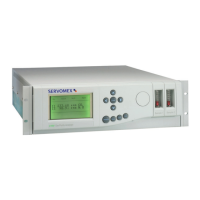3.9
3.2.2 Analogue Output Link Selections on Sensor Interface Board (SIB) PCB
After connecting up the required analogue outputs, the user should make the following
hardware link selections on the SIB PCB and (where fitted) Option PCB(s). Refer to
Figure 3.3.4 for general schematic of both these types of PCB. Carefully remove the
PCB for link selection and be sure to replace it in the correct slot and in the correct
orientation.
• Current/Voltage
Each output may be individually selected as current (0/4-20mA) or voltage
(0/2-10V). Factory setting is CURRENT.
Analogue o/p No.1 Current: Link 10 – OPEN
Voltage: Link 10 – CLOSED (solder link)
Analogue o/p No.2 Current: Link 11 – OPEN
Voltage: Link 11 – CLOSED (solder link)
• Action on System Failure
To enhance fail-safe operation, each output may be selected to drive HIGH
(to 20.5mA/10.2V) or LOW (to 0 mA/0V.) if the 2500 detects a system failure
(Shutdown state, i.e. serious fault and measurement invalid). Factory setting is
HIGH.
Analogue o/p No.1 HIGH on Shutdown: SW1/3 OFF
LOW on Shutdown: SW1/3 ON
Analogue o/p No.2 HIGH on Shutdown: SW1/2 OFF
LOW on Shutdown: SW1/2 ON
• Delay on Fail Safe Action
The detection of system failure (Shutdown, i.e. serious fault/measurement
invalid) is practically instantaneous and therefore a sufficiently large, rapid,
mains transient or brown-out may also cause the fail-safe action described
above to occur immediately. In installations where this would be undesirable,
the fail-safe action may be delayed for 5 seconds to overcome such possible
transient effects.
Factory setting is NO DELAY.
Both Analogue o/p DELAY on fail-safe: SW1/1 OFF
NO DELAY on fail-safe: SW1/1 ON
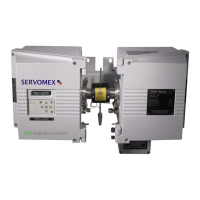
